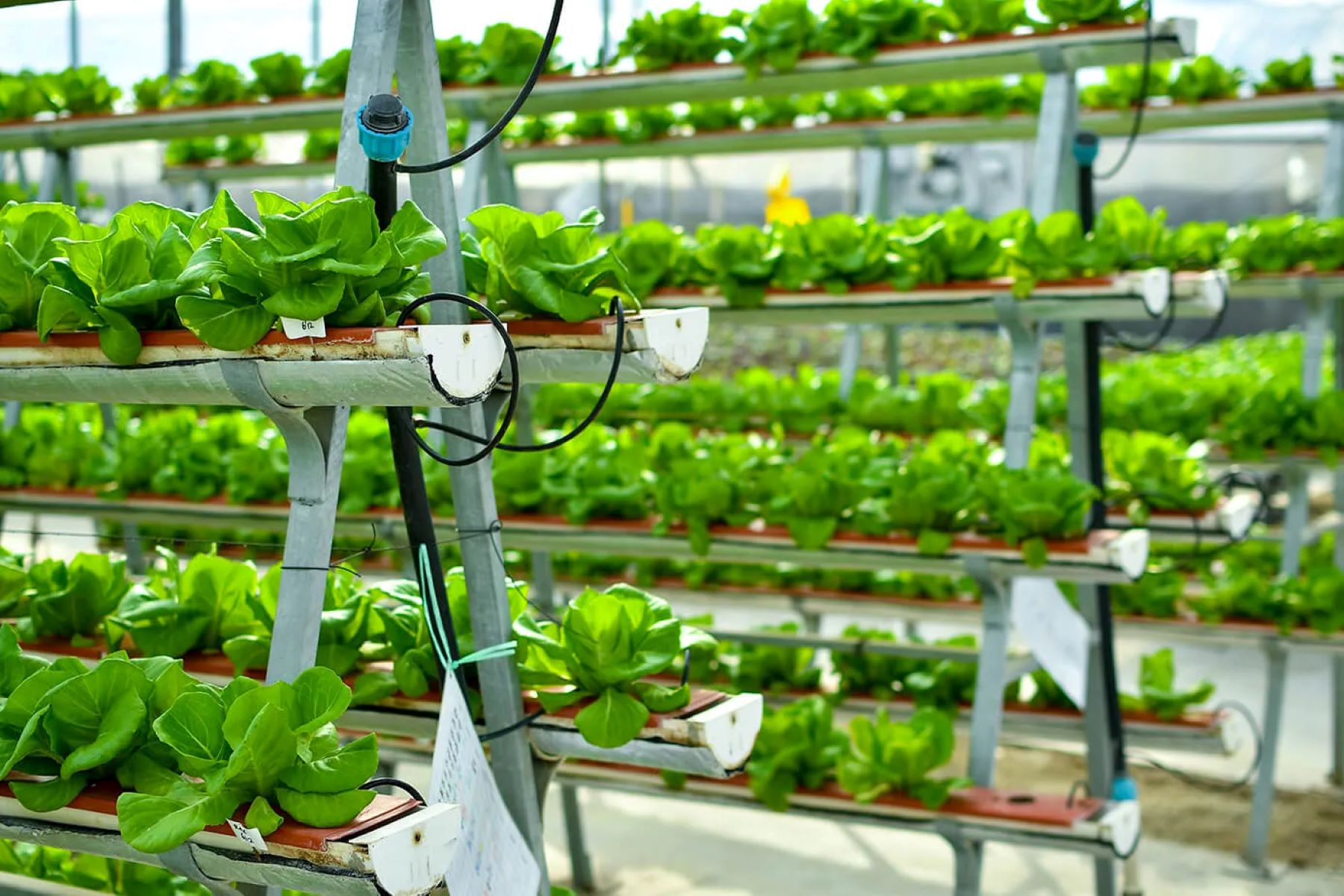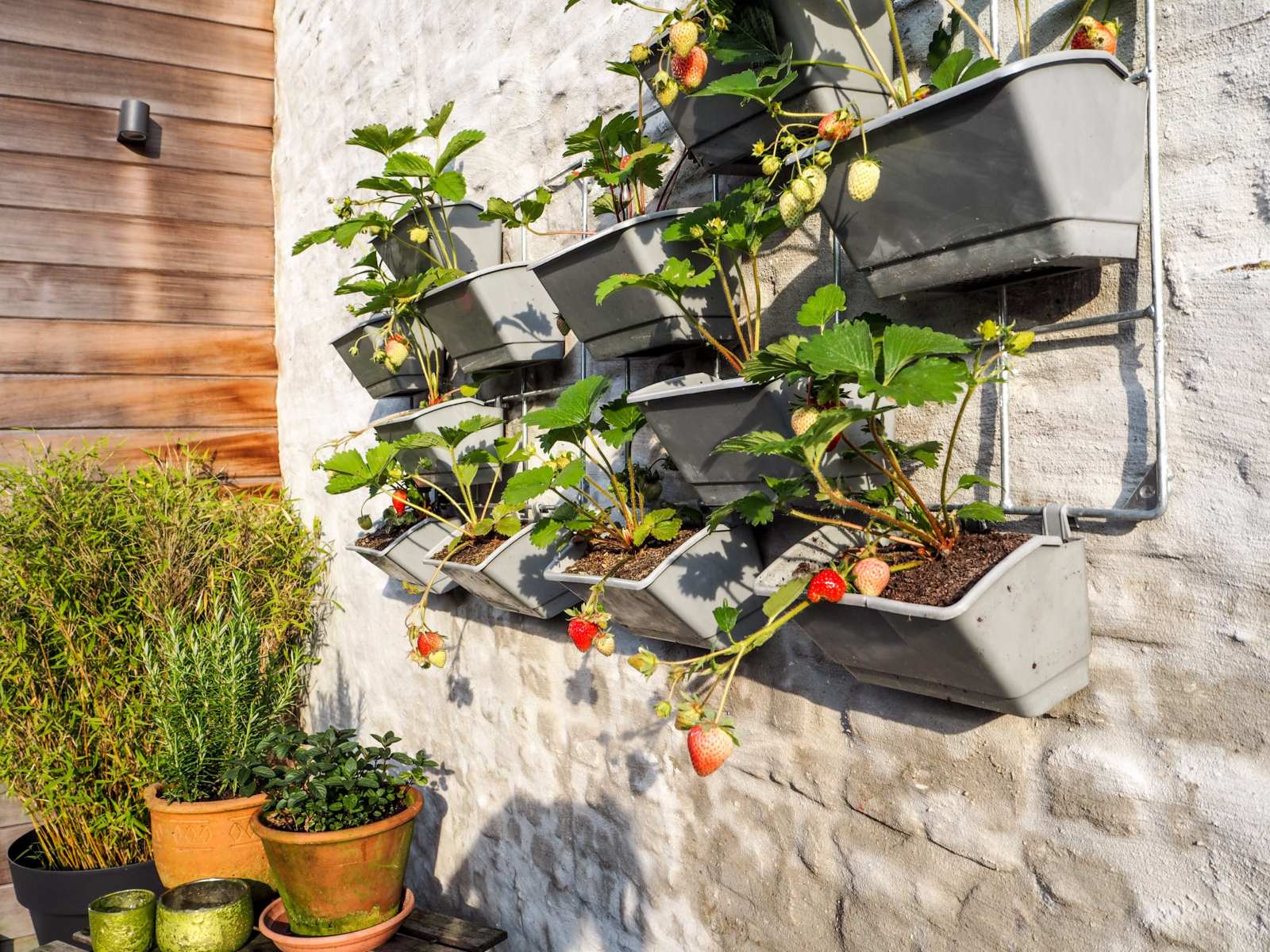Home>Ideas and Tips>How To Design A Vertical Aquaponics Garden For Small Spaces


Ideas and Tips
How To Design A Vertical Aquaponics Garden For Small Spaces
Published: September 1, 2024
Learn how to design a vertical aquaponics garden for small spaces. Maximize space, conserve water, and grow fresh produce sustainably.
(Many of the links in this article redirect to a specific reviewed product. Your purchase of these products through affiliate links helps to generate commission for Storables.com, at no extra cost. Learn more)
Introduction
In today's world, where space is increasingly limited and sustainability is paramount, vertical aquaponics gardens have emerged as a revolutionary solution for growing both vegetables and fish in small spaces. This method combines the principles of aquaculture (raising fish) and hydroponics (growing plants in water) to create a closed-loop system that is both efficient and environmentally friendly. In this article, we will delve into the intricacies of designing a vertical aquaponics garden, exploring its benefits, components, and step-by-step guide to help you set up your own system.
Read more: How To Build Vertical Garden
Benefits of Vertical Aquaponics
Space Efficiency
One of the most significant advantages of vertical aquaponics is its ability to maximize space. By growing plants vertically, you can produce about twice the amount of plants as you can with a hydroponic system of the same area. This makes it an ideal choice for small yards, patios, greenhouses, or even indoor spaces.
Water Efficiency
Aquaponics systems use significantly less water compared to traditional gardening methods. The water is recirculated and reused, minimizing waste and ensuring that the system remains sustainable. This is particularly beneficial in areas where water conservation is crucial.
Nutrient-Rich Environment
The fish waste in an aquaponics system acts as a natural fertilizer for the plants. This eliminates the need for synthetic fertilizers, making the system self-sufficient and environmentally friendly.
Low Maintenance
Once established, an aquaponics system requires minimal maintenance. The plants and fish work together to clean the water, reducing the need for frequent water changes and chemical treatments.
Versatility
Aquaponics systems can be adapted to grow a wide variety of plants including leafy greens, herbs, tomatoes, and even flowers. The choice of fish is also versatile, with tilapia and trout being popular choices for beginners.
Components of a Vertical Aquaponics System
Fish Tank
The fish tank is the heart of the aquaponics system. It houses the fish that produce waste which serves as fertilizer for the plants. The size of the tank will depend on the number of fish you plan to keep and the space available.
Pump
A pump is necessary to circulate the water from the fish tank to the grow beds. An aquarium pump is often sufficient for small systems, but larger systems may require more powerful pumps.
Grow Beds
The grow beds are where the plants are grown. These can be vertical columns or tubes that are filled with a growing medium such as clay pebbles or vermiculite. The water from the fish tank is pumped into these beds where it trickles down through the roots of the plants, providing them with nutrients.
Aeration System (Optional)
An aeration system can be added to increase oxygen levels in the water, which is beneficial for both the fish and plants. This can be achieved using an air pump and air stones.
Step-by-Step Guide to Building a Vertical Aquaponics System
Step 1: Plan Your System
Before you start building your system, it's essential to plan it out. Determine the space you have available and decide on the size of your fish tank and grow beds. Consider the number of plants and fish you want to grow and ensure that your system can support them.
Step 2: Prepare Your Materials
Gather all the necessary materials including PVC pipes, T-connectors, elbows, plastic cups, cloth strips, and a drill. You will also need a pump and any additional components such as an aeration system.
Step 3: Build Your Fish Tank
Use two 50-gallon drums or any other suitable container to create your fish tank. Ensure that it is clean and ready for use. If using drums, attach them together using PVC pipes and T-connectors to form a rectangular shape.
Step 4: Create Your Grow Beds
Cut 4-inch diameter PVC pipes into sections ranging from 2 to 3 feet long. These will form the vertical columns of your grow beds. Drill holes evenly spaced along each pipe to allow water to trickle down through the roots of the plants.
Step 5: Assemble the System
Lay out your pipes in the desired configuration using T-connectors and elbows. Ensure that all T-connectors face upwards and holes are facing upwards except for the drain hole which should be on the inside of the rectangle.
Step 6: Add Growing Medium
Fill each grow bed with a growing medium such as clay pebbles or vermiculite. This will provide a medium for plant roots to grow into and help retain water.
Step 7: Install Watering System
Connect your pump to the fish tank and attach tubing that will deliver water from the fish tank to each grow bed. Each grow bed should drain independently back into the fish tank.
Step 8: Add Plants and Fish
Seed your plants in the grow beds using cups or netpots. Add fish to your fish tank and ensure that they are healthy and thriving. Monitor water temperature, pH levels, nitrates, and ammonia levels regularly to maintain a healthy environment for both fish and plants.
Tips for Success
Monitor Water Quality
Regularly test the water quality to ensure that it remains safe for both fish and plants. Adjust pH levels and add beneficial bacteria as necessary to maintain a balanced ecosystem.
Provide Adequate Light
Ensure that your plants receive adequate light. This can be achieved using natural sunlight or grow lights if you are growing indoors. Leafy greens and herbs typically require less light compared to larger plants like tomatoes.
Maintain Balance
Achieving a balance between fish and plant populations is crucial. Too many fish can lead to excessive waste which may harm plants, while too few plants may not be able to clean the water effectively.
Scaling Up Your System
While vertical aquaponics systems are ideal for small spaces, they can also be scaled up for larger projects. Commercial systems often use larger tanks and more complex piping systems but follow similar principles.
Conclusion
Designing a vertical aquaponics garden for small spaces is a rewarding project that offers numerous benefits including space efficiency, water conservation, and low maintenance. By following these steps and tips, you can create a thriving system that provides fresh produce year-round while minimizing environmental impact. Whether you're an experienced gardener or just starting out, vertical aquaponics offers an exciting opportunity to grow your own food sustainably.
Additional Resources
For more detailed guides and resources on building your own vertical aquaponics system, consider visiting websites like Engineering for Change or Instructables. These platforms offer comprehensive tutorials and community feedback that can help you navigate any challenges you may encounter during your project.
Was this page helpful?
At Storables.com, we guarantee accurate and reliable information. Our content, validated by Expert Board Contributors, is crafted following stringent Editorial Policies. We're committed to providing you with well-researched, expert-backed insights for all your informational needs.










0 thoughts on “How To Design A Vertical Aquaponics Garden For Small Spaces”